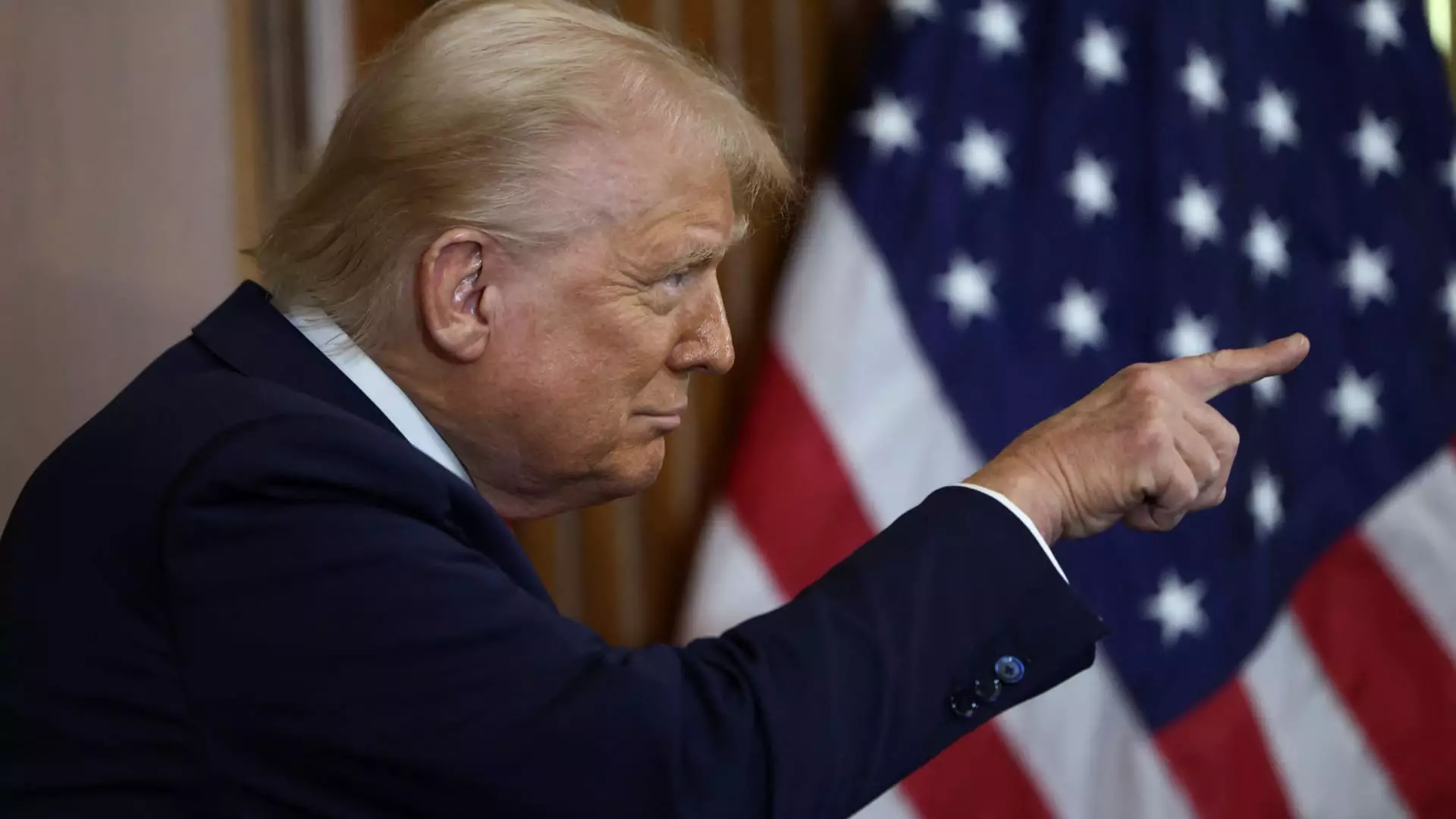In a dramatic twist that would have sounded implausible a few years ago, former President Donald Trump is suggesting a tax hike on the wealthy—a notion that flies in the face of traditional Republican dogma. This shift is particularly eye-catching given the party’s historical allegiance to tax cuts, especially for high earners and corporations. The basic premise of lowering taxes for the affluent has long been seen as a driving force behind economic growth. However, Trump’s recent inclination towards reinstating a higher federal income tax rate for the richest Americans reveals an underlying tension within the GOP.
As he attempts to navigate through complex legislative waters, Trump’s proposal to elevate the top federal income tax rate from 37% back to 39.6% strikes at the heart of Republican fiscal orthodoxy. The implication here is profound: Are the party’s primary voters ready for such a radical idea? The answer likely lies in the political calculus that suggests alleviating economic pressures on lower-income constituents may prove more beneficial in the long run, especially as inflation continues to escalate, and economic uncertainties loom.
Revisiting Historical Context: The Illusion of Tax Reductions
Trump’s suggestion to revert to pre-2017 tax levels might be viewed through a lens of practicality rather than ideology. The Tax Cuts and Jobs Act (TCJA) enacted by Trump in 2017, while celebrated by many at the time for its sweeping reductions, faced criticism for exacerbating income inequality and failing to sufficiently trickle down to the middle and lower classes. The idea that tax cuts for the wealthy would benefit everyone has largely been debunked in terms of tangible economic relief for average Americans.
Critics argue that the TCJA primarily fortified the coffers of the ultra-rich while neglecting the needs of the broader populace. In light of this failure, revisiting a higher income tax rate for those earning above $2.5 million annually does not only seem like a plausible option but a necessary correction to rectify the imbalance that the TCJA created. It raises an essential question: can Republicans adapt their stance to appeal to a more economically diverse base, or will they cling to an outdated narrative that may ultimately doom their electoral prospects?
Health Care and Social Support: A Justification for the Tax Increase
One of the most telling aspects of Trump’s proposal is his emphasis on using the increased revenue to protect Medicaid and preserve social support systems for lower and middle-income families. This reflective pivot toward welfare suggests a burgeoning understanding of intertwined economic realities, especially amidst a pandemic-era America grappling with healthcare and financial insecurity.
What appears to be a simple tax hike for the wealthiest may actually serve as a lifeline for the most vulnerable. The irony of the situation is striking; a figure known for his brash tax cuts is now invoking a sense of responsibility towards those at the lower tiers of society. Trump has ironically become a spokesperson for fiscal integrity in ensuring that tax benefits serve a greater social purpose—providing the groundwork for vital services that support the fabric of society.
The Delicate Balancing Act of Bipartisan Support
Nonetheless, the opposition within the Republican Party presents a formidable barrier. The internal struggle highlights a fracture between traditional conservatives who staunchly oppose tax increases under any circumstances and a more centrist faction willing to consider alternative funding measures. The capability to pass legislation through “reconciliation” presents opportunities but also highlights the challenges of achieving consensus.
As discussions unfold, the urgency of navigating these complex waters becomes increasingly pertinent. Trump’s call for collaboration will undoubtedly provoke spirited debates within the GOP and across the aisle. Will the party step away from its rigid fiscal conservatism to embrace a more adaptable, responsive governance? Time will reveal whether this shift is merely rhetorical or indicative of actual transformation within the party’s economic framework.
The Populist Wave: A Path to New Political Dynamics?
Ultimately, this proposal marks an ideological crossroads for the Republican Party, one that encapsulates the struggle between upholding entrenched beliefs and responding to a populace weary of economic hardship. If Trump’s ideas gain traction, it could signify a broader acknowledgment of the need for wealth redistribution for the sake of societal stability. Such an evolution within the Republican Party might invite unforeseen opportunities for bipartisanship, bridging gaps that have long divided political ideologies in America.
Critics may scoff, but if the wealthy are asked to shoulder a fairer share of the nation’s financial burdens, it could sway public opinion in an era where economic discontent is palpable. In the grand experiment of American democracy, this unexpected pivot might lead to a rejuvenated discourse that values both fiscal responsibility and social equity—as these themes become essential in negotiating the future welfare of the nation.

Leave a Reply